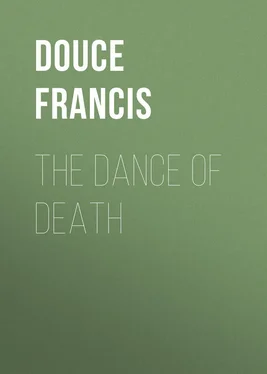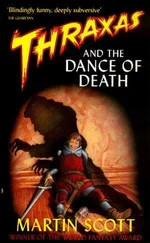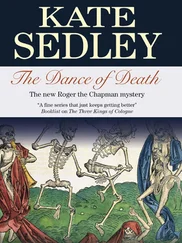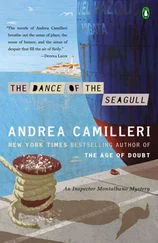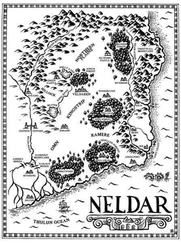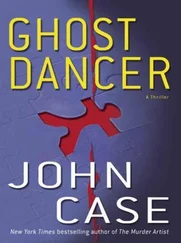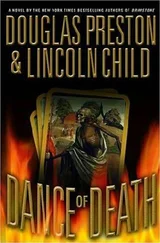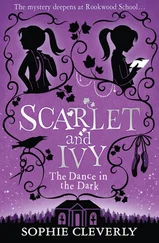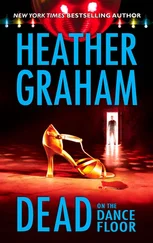Francis Douce - The Dance of Death
Здесь есть возможность читать онлайн «Francis Douce - The Dance of Death» — ознакомительный отрывок электронной книги совершенно бесплатно, а после прочтения отрывка купить полную версию. В некоторых случаях можно слушать аудио, скачать через торрент в формате fb2 и присутствует краткое содержание. Жанр: foreign_antique, foreign_prose, на английском языке. Описание произведения, (предисловие) а так же отзывы посетителей доступны на портале библиотеки ЛибКат.
- Название:The Dance of Death
- Автор:
- Жанр:
- Год:неизвестен
- ISBN:нет данных
- Рейтинг книги:5 / 5. Голосов: 1
-
Избранное:Добавить в избранное
- Отзывы:
-
Ваша оценка:
- 100
- 1
- 2
- 3
- 4
- 5
The Dance of Death: краткое содержание, описание и аннотация
Предлагаем к чтению аннотацию, описание, краткое содержание или предисловие (зависит от того, что написал сам автор книги «The Dance of Death»). Если вы не нашли необходимую информацию о книге — напишите в комментариях, мы постараемся отыскать её.
The Dance of Death — читать онлайн ознакомительный отрывок
Ниже представлен текст книги, разбитый по страницам. Система сохранения места последней прочитанной страницы, позволяет с удобством читать онлайн бесплатно книгу «The Dance of Death», без необходимости каждый раз заново искать на чём Вы остановились. Поставьте закладку, и сможете в любой момент перейти на страницу, на которой закончили чтение.
Интервал:
Закладка:
“Primaramente llama a su danza a dos doncellas,
A esta mi danza trax de presente,
Estas dos donzellas que vades fermosas:
Ellas vinieron de muy malamente
A oir mes canciones que son dolorosas,
Mas non les valdran flores nin rosas,
Nin las composturas que poner salian:
De mi, si pudiesen parterra querrian,
Mas non proveda ser, que son mis esposas.”
It may, however, be doubted whether the Jew Santo was the author of this Dance of Death, as it is by no means improbable that it may have been a subsequent work added to the manuscript referred to by Sanchez.
In 1675, Maitre Jacques Jacques, a canon of the cathedral of Ambrun, published a singular work, intitled “Le faut mourir et les excuses inutiles que l’on apporte à cette nécessité. Le tout en vers burlesques.” Rouen, 1675, 12mo. It is written much in the style of Scarron and some other similar poets of the time. It commences with a humorous description given by Death of his proceedings with various persons in every part of the globe, which is followed by several dialogues between Death and the following characters: 1. The Pope. 2. A young lady betrothed. 3. A galley slave. 4. Guillot, who has lost his wife. 5. Don Diego Dalmazere, a Spanish hidalgo. 6. A king. 7. The young widow of a citizen. 8. A citizen. 9. A decrepit rich man. 10. A canon. 11. A blind man. 12. A poor peasant. 13. Tourmenté, a poor soldier in the hospital. 14. A criminal in prison. 15. A nun. 16. A physician. 17. An apothecary. 18. A lame beggar. 19. A rich usurer. 20. A merchant. 21. A rich merchant. As the book is uncommon, the following specimen is given from the scene between Death and the young betrothed girl:
A vous la belle demoiselle,
Je vous apporte une nouvelle,
Qui certes vous surprendra fort.
C’est qu’il faut penser à la mort,
Tout vistement pliés bagage,
Car il faut faire ce voyage.
Qu’entends-je? Tout mon sens se perd,
Helas! vous me prener sans verd;
C’est tout à fait hors de raison
Mourir dedans une saison
Que je ne dois songer qu’à rire,
Je suis contrainte de vous dire,
Que très injuste est vostre choix,
Parce que mourir je ne dois,
N’estant qu’en ma quinzième année,
Voyez quelque vielle échinée,
Qui n’ait en bouche point de dent;
Vous l’obligerez grandement
De l’envoyer à l’autre monde,
Puis qu’ici toujours elle gronde;
Vous la prendrez tout à propos,
Et laissez moi dans le repos,
Moi qui suis toute poupinette,
Dans l’embonpoint et joliette,
Qui n’aime qu’à me réjouir,
De grâce laissez moi jouir, &c.
CHAPTER III
Macaber not a German or any other poet, but a nonentity. – Corruption and confusion respecting this word. – Etymological errors concerning it. – How connected with the Dance. – Trois mors et trois vifs. – Orgagna’s painting in the Campo Santo at Pisa. – Its connection with the trois mors et trois vifs, as well as with the Macaber dance. – Saint Macarius the real Macaber. – Paintings of this dance in various places. – At Minden; Church-yard of the Innocents at Paris; Dijon; Basle; Klingenthal; Lubeck; Leipsic; Anneberg; Dresden; Erfurth; Nuremberg; Berne; Lucerne; Amiens; Rouen; Fescamp; Blois; Strasburg; Berlin; Vienna; Holland; Italy; Spain.
The next subject for investigation is the origin of the name of Macaber, as connected with the Dance of Death, either with respect to the verses that have usually accompanied it, or to the paintings or representations of the Dance itself; and first of the verses.
It may, without much hazard, be maintained that, notwithstanding these have been ascribed to a German poet called Macaber, there never was a German, or any poet whatever bearing such a name. The first mention of him appears to have been in a French edition of the Danse Macabre, with the following title, “Chorea ab eximio Macabro versibus Alemannicis edito, et à Petro Desrey emendata. Parisiis per Magistrum Guidonem Mercatorem pro Godefrido de Marnef. 1490, folio.” This title, from its ambiguity, is deserving of little consideration as a matter of authority; for if a comma be placed after the word Macabro, the title is equally applicable to the author of the verses and to the painter or inventor of the Dance. As the subject had been represented in several places in Germany, and of course accompanied with German descriptions, it is possible that Desrey might have translated and altered some or one of these, and, mistaking the real meaning of the word, have converted it into the name of an author. It may be asked in what German biography is such a person to be found? how it has happened that this famous Macaber is so little known, or whether the name really has a Teutonic aspect? It was the above title in Desrey’s work that misled the truly learned Fabricius inadvertently to introduce into his valuable work the article for Macaber as a German poet, and in a work to which it could not properly belong. 39 39 Bibl. Med. et Inf. Ætat. tom. v. p. 1.
M. Peignot has very justly observed that the Danse Macabre had been very long known in France and elsewhere, not as a literary work, but as a painting; and he further remarks that although the verses are German in the Basil painting, executed about 1440, similar verses in French were placed under the dance at the Innocents at Paris in 1424. 40 40 Recherches sur les Danses de Mort, pp. 79 80.
At the beginning of the text in the early French edition of the Danse Macabre, we have only the words “la danse Macabre sappelle,” but no specific mention is made of the author of the verses. John Lydgate, in his translation of them from the French, and which was most probably adopted in many places in England where the painting occurred, speaks of “the Frenche Machabrees daunce,” and “the daunce of Machabree.” At the end, “Machabree the Doctoure,” is abruptly and unconnectedly introduced at the bottom of the page. It is not in the French printed copy, from the text of which Lydgate certainly varies in several respects. It remains, therefore, to ascertain whether these words belong to Lydgate, or to whom else; not that it is a matter of much importance.
The earliest authority that has been traced for the name of “Danse Macabre,” belongs to the painting at the Innocents, and occurs in the MS. diary of Charles VII. under the year 1424. It is also strangely called “Chorea Machabæorum,” in 1453, as appears from the before cited document at St. John’s church at Besançon. Even the name of one Maccabrees , a Provençal poet of the 14th century, has been injudiciously connected with the subject, though his works are of a very different nature.
Previously to attempting to account for the origin of the obscure and much controverted word Macaber, as applicable to the dance itself, it may be necessary to advert to the opinions on that subject that have already appeared. It has been disguised under the several names of Macabre, 41 41 Passim.
Maccabees, 42 42 Modern edition of the Danse Macabre.
Maratre, 43 43 Journal de Charles VII.
and even Macrobius. 44 44 Lansd. MS. No. 397 – 20.
Sometimes it has been regarded as an epithet. The learned and excellent M. Van Praet, the guardian of the royal library at Paris, has conjectured that Macabre is derived from the Arabic Magbarah , magbourah, or magabir, all signifying a church-yard. M. Peignot seems to think that M. Van Praet intended to apply the word to the Dance itself, 45 45 Peignot Recherches, p. 109.
but it is impossible that the intelligent librarian was not aware that personified sculpture, as well as the moral nature of the subject, cannot belong to the Mahometan religion. Another etymology extremely well calculated to disturb the gravity of the present subject, is that of M. Villaret, the French historian, when adverting to the spectacle of the Danse Macabre, supposed to have been given by the English in the church-yard of the Innocents at Paris. Relying on this circumstance, he unceremoniously decides that the name of the dance was likewise English; and that Macabrée is compounded of the words, to make and to break . The same silly etymology is referred to as in some historical dictionary concerning the city of Paris by Mons. Compan in his Dictionaire de Danse, article Macaber ; and another which is equally improbable has been hazarded by the accomplished Marquis de Paulmy, who, noticing some editions of the Danse Macabre in his fine library, now in the arsenal at Paris, very seriously states that Macaber is derived from two Greek words, which denote its meaning to be an infernal dance ; 46 46 Mélange d’une Grande Bibliothèque, tom. vii. p. 22.
but if the Greek language were to be consulted on the occasion, the signification would turn out to be very different.
Интервал:
Закладка:
Похожие книги на «The Dance of Death»
Представляем Вашему вниманию похожие книги на «The Dance of Death» списком для выбора. Мы отобрали схожую по названию и смыслу литературу в надежде предоставить читателям больше вариантов отыскать новые, интересные, ещё непрочитанные произведения.
Обсуждение, отзывы о книге «The Dance of Death» и просто собственные мнения читателей. Оставьте ваши комментарии, напишите, что Вы думаете о произведении, его смысле или главных героях. Укажите что конкретно понравилось, а что нет, и почему Вы так считаете.
